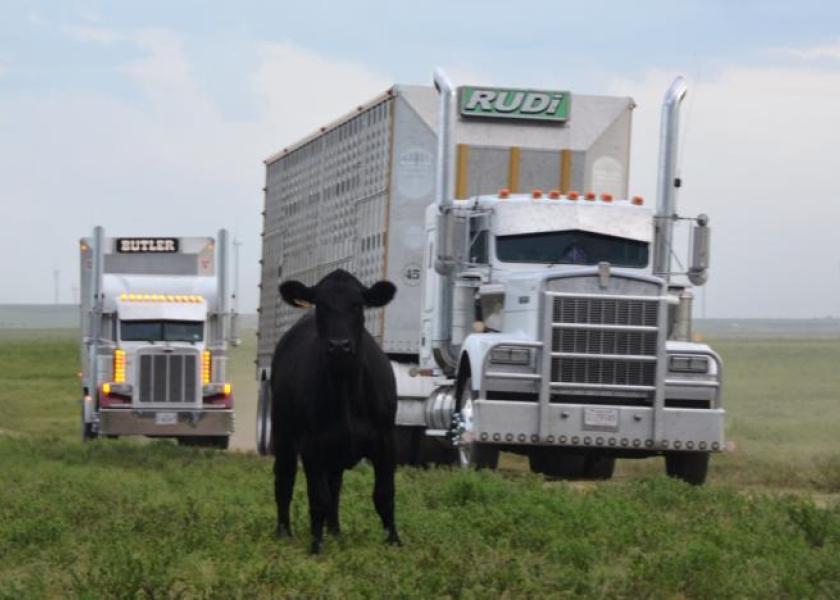Volatile Cattle Markets Call For More Diligent Disease Management

It’s no secret that every sector of the beef cattle industry has been significantly impacted by COVID-19. For stockers specifically, the impact is estimated at a loss of $159.98/head, which equates to $2.5 billion in damage to the entire sector. Volatile cattle prices and decreased margins make managing bovine respiratory disease (BRD) imperative to protecting the profitability of stocker operations.
“Stocker producers have taken a huge hit on the value of their calves. Getting cattle sold at a reasonable price and purchasing enough cattle to maintain an adequate revenue stream has been a big challenge,” said Mike Nichols, DVM, Boehringer Ingelheim. “Any losses from disease or death can further take away from the value of all calves in a given group.”
“Respiratory disease can really take a bite out of your bottom line,” explained Steve Howard, a stocker producer in Claypool, Oklahoma. “Because the margins are thinner than ever, we have to run more head and manage BRD more effectively to pay the bills.”
Howard typically has more than 5,000 high-risk calves on his operation at all times, and says respiratory disease is a year-round battle. “You may get along fine for three or four loads of calves, and then you’ll get a load that turns south on you. We like to receive calves as fresh as we can, and upon arrival we’ll determine if certain calves are administered an antibiotic, or if the entire group receives metaphylactic treatment.”
When does it pay to use metaphylaxis?
With a group of high-risk calves, it’s common to take a conservative approach to ensure that all animals are protected from sickness whenever possible. Producers receiving high-risk cattle can reduce the threat of disease by implementing metaphylaxis, or treating cattle upon arrival with a rapid-response antimicrobial. However, it’s important to understand that some calves treated metaphylactically may not have succumbed to BRD, and therefore, may not be benefiting from antibiotic metaphylaxis.
“Whether or not a group of calves should receive metaphylactic treatment will vary with each load,” said Dr. Nichols. “There are many factors to consider before making the decision to administer an antibiotic to an entire group of calves.”
The first step in any targeted metaphylaxis program is to work with a veterinarian to develop a plan that objectively evaluates incoming cattle. The plan should outline the exact criteria needed to select cattle for metaphylaxis. Typical selection criteria for metaphylaxis may include age and weight of cattle, length of transportation, weather conditions, environmental and nutritional factors as well as cattle origin.
“In the spring and fall when the temperature is fluctuating so much, we know we’re going to see more BRD, so that’s when we’ll provide metaphylactic treatment to calves shortly after arrival,” said Howard. “But if I buy calves that have had a round or two of vaccinations, even if they’re just coming off the cow, we typically don’t need to spend money treating the calves on arrival. Instead, we’ll work them when they get here and keep an eye on them.”
Further mitigating treatment and re-treatment costs
Antibiotic treatments are a direct cost to cattle producers, but there are also indirect costs associated with the labor and time needed to treat (and sometimes re-treat) calves. Plus, every time a calf gets sick, there is going to be some damage to the lungs and a setback to the calf’s ability to grow to its full potential.
“We know that there are many other ways besides antibiotics to prevent and manage BRD,” said Dr. Nichols. “Producers that invest their time and money into low-stress cattle handling, facilities with ample pen space, properly administered vaccines, and well-formulated nutrition programs can greatly reduce their disease incidence and use of antibiotics, which ultimately saves them money long-term.”
But even with the best management practices in place, some animals will still get sick. When this happens, using a quick, safe and effective treatment option will yield the best results.
“Our go-to antibiotic is practical for our stocker herd because we rarely have to repull calves after the initial treatment, and unlike some other products, it draws well in all weather conditions. We also like that it’s less abrasive; we rarely see injection site lesions,* which is a huge benefit,” explained Howard.
As the uncertainty associated with cattle markets and COVID-19 continues, it’s important for producers to look for ways to reduce management costs while still maintaining a healthy and productive herd.
While stocker producers are dealing with many of the same issues relating to buying high-risk calves and making a profit on those calves, no two BRD management programs will look the same. Your local veterinarian can assist you in designing more cost-effective BRD prevention and treatment strategies for your herd.







